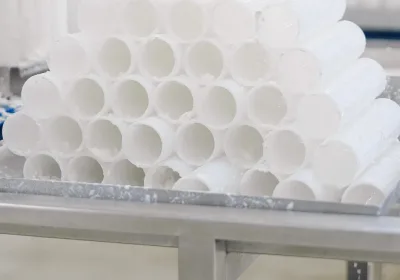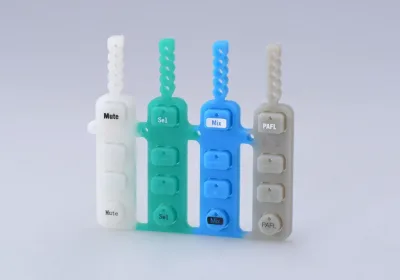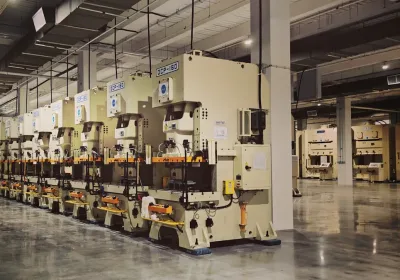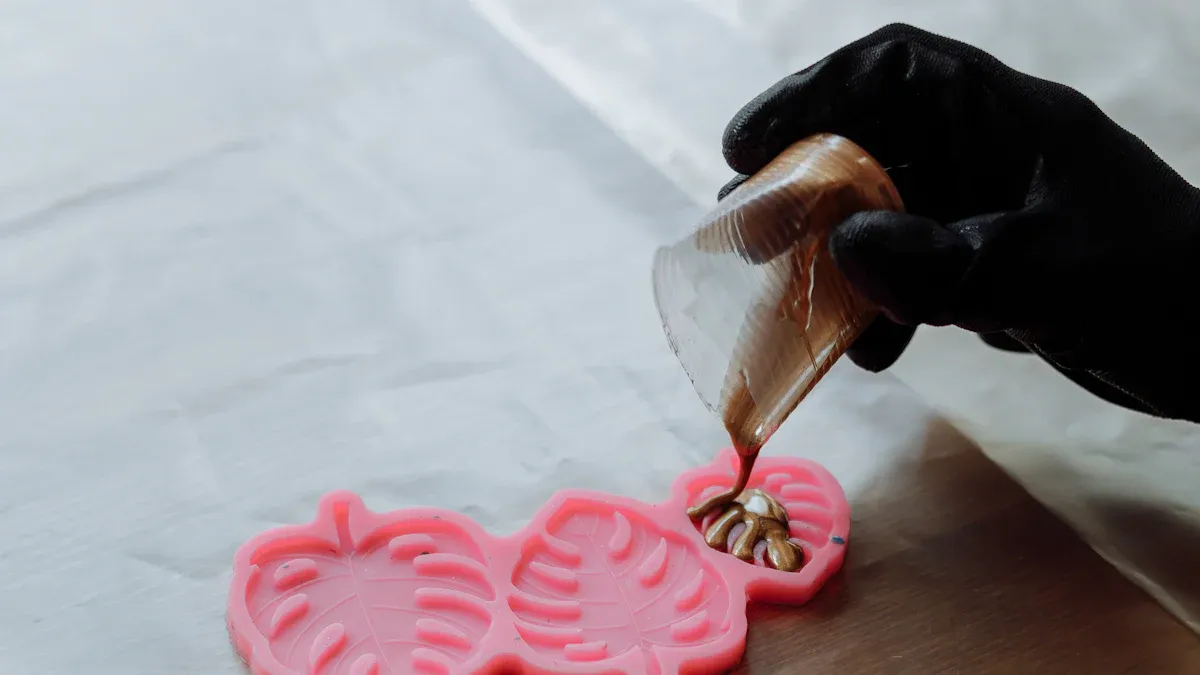
Resin art is all about creating shiny, beautiful items with liquid resin. You can make coasters, jewelry, or unique trays. It’s a blend of crafting and science! If you’re just starting out, silicone molds are incredibly useful. They are flexible, reusable, and shape resin perfectly. Consider them essential tools for beginners to learn the craft. They’re user-friendly, ensuring your projects turn out beautifully. For newcomers, using silicone molds is the simplest way to dive into resin art without any stress.
Key Takeaways
Silicone molds are great for beginners in resin art. They bend easily, can be reused, and are simple to clean. This makes crafting easier and less stressful.
Always measure resin and hardener carefully. This helps it harden properly and avoids problems like bubbles or soft spots.
Wear safety gear like gloves and masks when using resin. This keeps your skin and lungs safe from harmful chemicals.
Work in a space with good airflow. Fresh air reduces bad fumes and makes crafting more fun.
Begin with easy projects like coasters or keychains. These are simple, fun, and help you get better at resin art.
Understanding Silicone Molds
What are silicone molds?
Silicone molds are soft, strong tools that shape resin into designs. They are made from silicone, a stretchy material that handles heat well. These molds come in many shapes and sizes, from simple to detailed. You can use them to make coasters, jewelry, or custom designs. Many crafters prefer silicone molds for their creative projects.
Silicone molds are also safe for different uses. They meet important safety standards, such as:
FDA: Ensures food-safe silicone has no harmful chemicals.
LFGB: A strict European rule ensuring no chemical leaks.
ISO 10993: Tests safety for medical use.
REACH and RoHS: Ensure no dangerous chemicals in industrial products.
These certifications make silicone molds trusted by beginners and experts alike.
Benefits of creating with silicone molds
Silicone molds have many advantages over regular molds. They are bendable, so removing your resin piece is easy and damage-free. They last a long time, saving you money since they can be reused. Silicone molds resist heat and chemicals, keeping their shape even after many uses.
Here’s a simple comparison of silicone molds and traditional molds:
Feature | Silicone Molds (LSR) | Traditional Molds |
|---|---|---|
Safe for Skin | High | Varies |
Clear Finish | Excellent | Limited |
Handles Heat Well | High | Moderate |
Resists Chemicals | High | Varies |
Good for Complex Shapes | High | Limited |
Long-lasting | High | Varies |
This table shows why silicone molds are the top choice for crafting with resin.
Why silicone molds are beginner-friendly
If you’re new to resin art, silicone molds are perfect for you. Their softness makes it easy to remove your finished piece without breaking it. You can reuse them, which is helpful when trying new designs. Cleaning them is simple, so you can quickly start your next project. Whether following a guide or making diy molds, silicone molds make crafting easier.
With silicone molds, you can focus on being creative. They take away the hard parts, letting you enjoy making beautiful resin art.
Essential Tools and Materials for Resin Art
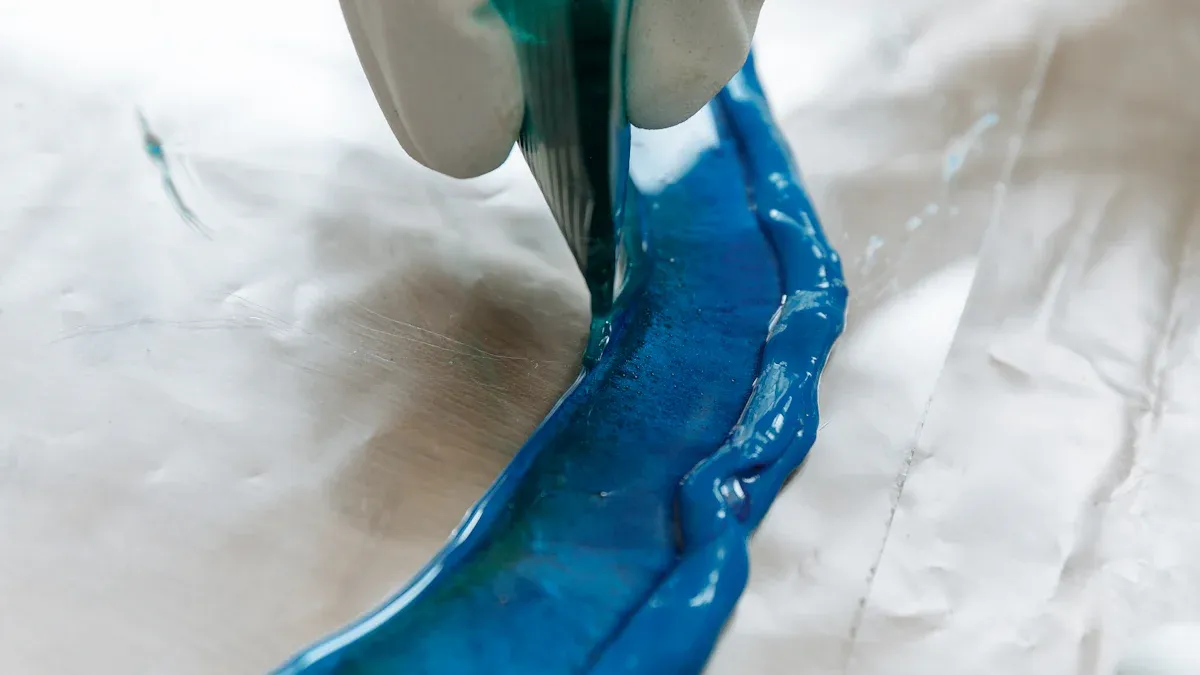
Starting resin art is fun, but having the right tools helps. Let’s look at what you need to make amazing resin projects.
Resin and hardener
Resin is the main material in resin art. It’s a liquid that hardens into a shiny, strong surface when mixed with a hardener. The hardener is like a magic helper that makes the resin solid. These two usually come together in a kit with mixing instructions.
Choose good-quality resin for clear results and fewer bubbles. Epoxy resin is great for beginners because it’s easy to use and cures at room temperature. Mix carefully using measuring cups and stir sticks. This ensures your resin hardens properly and looks smooth.
Pro Tip: Stir slowly to avoid bubbles. Use a heat gun or torch to pop any bubbles before the resin sets.
Silicone molds
Silicone molds are perfect for shaping resin into cool designs. They are flexible, heat-resistant, and non-stick, making them ideal for resin art. Removing your finished piece is easy because the molds bend without breaking the resin.
If you’re new, start with simple pre-made silicone molds. They’re easy to use and can be reused, saving money. Feeling creative? Try making your own molds for unique designs that match your style.
Here’s a quick cost guide for resin art materials, including silicone molds:
Cost Component | Estimated Cost Range | Notes |
|---|---|---|
Resin & Pigment Supplies | High-quality materials ensure unique aesthetics | |
Safety Equipment | $150 - $400 | Includes masks, gloves, and ventilation aids |
DIY Kit Inventory | $250 - $350 | Essential for crafting starter kits |
Basic Craft Tools | $100 - $250 | Tools necessary for precise detailing and finishing |
Good silicone molds help your resin projects look amazing every time.
Pigments, dyes, and glitter
Adding color and sparkle to resin is exciting! Pigments, dyes, and glitter let you create colorful and shiny designs. Pigments give bold, solid colors, while dyes create a see-through effect. Glitter adds sparkle, making your pieces stand out.
Start with a small amount of pigment or glitter when mixing. You can add more if needed. Too much color can affect how the resin hardens. Try different combinations to find your favorite look. Whether you want bright colors or soft shimmer, these materials let you be creative.
Did You Know? People love custom designs with pigments and glitter. Reviews show they increase satisfaction by 20%!
With these tools and materials, you’re ready to start resin art. Keep it simple, try new things, and have fun creating!
Mixing tools and accessories.
To make great resin art, you need the right tools. These tools help you measure, mix, and pour resin correctly. Here’s what you’ll need:
Measuring Cups: Use clear cups with markings to measure resin and hardener. Exact amounts are important for proper curing.
Stir Sticks: Silicone or wooden sticks are best for mixing resin. Silicone sticks can be reused, while wooden ones are for one-time use.
Mixing Containers: Pick smooth, non-stick containers. Silicone bowls are reusable and easy to clean.
Pipettes or Squeeze Bottles: These help you add small amounts of pigments or dyes. They give you better control when adding colors.
Heat Gun or Torch: Use these to remove bubbles from your resin. This makes your project look smooth and professional.
Pro Tip: Stir resin slowly and scrape the container’s sides. This avoids unmixed resin ruining your work.
Having these tools ready makes mixing resin easier and stress-free. You can then focus on creating amazing designs!
Gloves and safety equipment.
Safety is very important when working with resin. Resin has chemicals that can harm your skin or lungs. Use these items to stay safe:
Gloves: Wear nitrile gloves to protect your hands. Latex gloves don’t work as well.
Safety Glasses: Keep your eyes safe from splashes. Resin is sticky and hard to clean if it gets in your eyes.
Respirator Mask: A mask with a filter stops you from breathing in fumes. Even in a ventilated space, a mask adds extra safety.
Apron or Old Clothes: Resin can stain clothes forever. Wear an apron or clothes you don’t mind ruining.
Ventilation: Work in a space with fresh air. Open windows or use a fan to keep air moving.
Note: Safety gear is very important. It keeps you safe and lets you enjoy resin art without worry.
With the right safety tools, you can make resin art safely and have fun creating beautiful pieces.
Getting Your Workspace Ready for Resin Art
Creating a ventilated workspace
Good airflow is very important when using resin. Resin gives off fumes that can be harmful if breathed in too long. To stay safe, make sure fresh air can move through your workspace. Open windows or use fans to keep air flowing. If you can, use an air purifier to remove harmful particles from the air. This keeps the air cleaner while you work.
Plan your workspace layout for better results. Keep the area tidy so air can move freely. In small rooms, a fan or portable air system helps a lot. A ventilated space not only keeps you healthy but also makes crafting more enjoyable.
Keeping tools and materials organized
A neat workspace makes resin art easier and more fun. Start by putting similar items together. Keep resin, hardener, and colors in one place. Use small trays or boxes for stir sticks, gloves, and measuring cups. This way, you can grab what you need quickly.
Label your supplies to avoid mistakes. For example, mark mixing cups so they aren’t used for other things. Store silicone molds flat to keep their shape. An organized workspace lets you focus on creating instead of searching for tools.
Protecting your work area from spills
Resin can be messy, so protect your surfaces. Cover your table with spill-proof materials. Plastic sheets, silicone mats, or parchment paper work well. These are easy to clean and stop resin from sticking.
Here’s a simple comparison of materials:
Material Type | Features | How Well It Works |
|---|---|---|
Plastic Sheets | Waterproof, disposable | Great for large areas |
Silicone Mats | Non-stick, reusable | Best for small projects |
Parchment Paper | Heat-resistant, disposable | Good for short-term use |
Pick the material that suits your project and budget. Protecting your surfaces saves cleanup time and keeps your workspace neat.
Step-by-Step Guide for Using Silicone Molds video
Making amazing resin art with silicone molds is simple! Follow this guide to learn the basics and turn your ideas into reality.
Mixing resin and hardener
Mixing resin correctly is key to a great project. First, read the instructions on your resin kit. Most kits tell you the resin-to-hardener ratio. For example, the WEST System 105/205 uses a 5:1 ratio by volume. Use measuring cups to get the amounts right.
Steps to mix resin and hardener:
Measure carefully: Pour resin and hardener into separate cups. Combine them in the right ratio.
Stir slowly: Mix for 2-3 minutes. Scrape the sides and bottom to blend well.
Avoid bubbles: Stir gently to prevent bubbles. If bubbles appear, use a heat gun or torch to pop them after pouring.
Pro Tip: Work in a ventilated area and wear gloves to keep your hands safe from sticky resin.
Adding pigments or glitter
This is the fun part—adding color and sparkle! Pigments, dyes, and glitter make your resin colorful and shiny. Start with a little and add more if needed. Follow these tips for the best results:
Pigments: Use 1% to 2% of the resin’s volume. This keeps colors bright without affecting curing.
Mica powder: Mix well to stop it from sinking. It gives a shiny, pearl-like look.
Glitter: Add a small amount for sparkle. Bigger glitter pieces may sink, so sprinkle them on cured layers for a floating effect.
Pigment Type | Suggested Ratio (by volume) | Tips |
|---|---|---|
General Pigment | 1% to 2% | Adjust based on how strong you want the color. |
Mica Powder | Mix well | Prevent sinking; pour on cured layers for swirls. |
Glitter | Varies | Adds sparkle; larger pieces may sink. |
Did You Know? Beginners love mica powder and glitter because they’re easy to use and make projects look amazing.
Pouring resin into silicone molds
After mixing and coloring your resin, it’s time to pour it into the molds. Follow these steps for the best results:
Prepare the mold: Clean it and use a release agent if needed. This helps the resin come out easily after curing.
Pour slowly: Pour the resin in a thin stream to avoid bubbles.
Fill completely: Make sure the resin reaches all parts of the mold. Use a toothpick or stick to guide it into small details.
Remove bubbles: Use a heat gun or torch to pop surface bubbles. Keep the heat source a few inches away to protect the mold.
Note: Silicone molds are soft and non-stick, making them great for resin art. They help your finished piece look smooth and shiny.
By using these steps, you’ll create stunning resin art that looks professional. Take your time, try different colors, and enjoy the process!
Removing air bubbles.
Air bubbles can ruin the look of your resin project, but don’t worry—they’re easy to handle! After mixing your resin and hardener, you might notice tiny bubbles forming. These bubbles can get trapped in your silicone molds, so removing them is an important step for bubble-free resin casting.
Here’s how you can tackle those pesky bubbles:
Pour slowly: When pouring resin into your silicone molds, do it in a thin, steady stream. This reduces the chance of air getting trapped.
Use a heat gun or torch: Gently wave a heat gun or torch over the surface of the resin. The heat causes bubbles to rise and pop. Keep the tool a few inches away to avoid damaging the mold.
Tap the mold: Lightly tap the sides of the mold to help bubbles escape. You can also use a toothpick to pop any stubborn ones.
Warm the resin: If your resin is thick, warm it slightly before mixing. This makes it easier to pour and reduces bubbles.
Pro Tip: Don’t overheat the resin or mold. Too much heat can warp the mold or affect the curing process.
By following these steps, you’ll achieve a smooth, professional finish every time.
Allowing resin to cure.
Curing is the process where resin hardens and transforms into a solid, glossy surface. This step requires patience, but it’s worth the wait! Follow the instructions on your resin kit for the best results. Most resins cure at room temperature, but the time can vary depending on the type of resin and environmental conditions.
Here’s a breakdown of curing cycles based on recent studies:
Total Curing Time | Mechanical Performance Impact | |
|---|---|---|
MRCC | 325 min | Less than 4% reduction |
Optimized Cycle 1 | 19% time reduction | Maintained performance |
Optimized Cycle 2 | 45% time reduction | Maintained performance |
For beginners, sticking to the standard curing time is a safe bet. Place your molds on a flat, level surface to prevent uneven curing. Avoid touching or moving the molds during this time, as it can disturb the resin and cause imperfections.
Did You Know? Temperature and humidity can affect curing. A warm, dry environment speeds up the process, while cold or humid conditions slow it down.
Once the resin has fully cured, you’re ready for the final step—demolding and finishing!
Demolding and finishing your resin piece.
The moment of truth! After the resin has cured, it’s time to remove your dish from the mold. Silicone molds make this step super easy because they’re flexible and non-stick. Gently peel back the mold to release your resin piece. If it feels stuck, don’t force it—let it cure a bit longer.
Once you’ve removed your piece, inspect it for any rough edges or imperfections. Here’s how to finish your resin project:
Sand the edges: Use fine-grit sandpaper to smooth out any sharp or uneven areas. Wet sanding works best to avoid scratches.
Polish the surface: Apply a resin polish or a small amount of car wax to make your piece shine. Buff it with a soft cloth for a glossy finish.
Add final touches: If you want to add extra details, like paint or decals, now’s the time. Seal the piece with a thin layer of resin for a professional look.
Note: Always clean your silicone molds after use. This keeps them in good condition for your next resin casting project.
With these steps, you’ll create stunning resin art that’s ready to display or gift. Enjoy the satisfaction of turning simple materials into something beautiful!
Tips and Tricks for Beginners
Avoiding common mistakes in resin art
Starting resin art can feel tricky, but avoiding mistakes helps. Always measure resin and hardener carefully. Even small errors can stop it from hardening. Use clear cups with markings for accurate measurements.
Bubbles are another common problem in resin projects. Stir resin slowly and pour it in a thin stream to avoid them. If bubbles still show up, use a heat gun or torch to pop them. Keep the heat tool a few inches away to protect your silicone molds.
Here are more tips to avoid problems:
Place cardboard behind stretched canvas to stop sagging or pooling.
Sand cured resin if bubbles or dirt appear, then add a fresh layer.
Check the Safety Data Sheet (SDS) for safety rules and gear advice.
Mistakes happen, but these tips will help you feel confident while creating.
Cleaning and maintaining silicone molds
Clean silicone molds after every use for the best results. Wash them with warm, soapy water. Don’t use rough sponges, as they can scratch the mold. Let the molds air dry fully before putting them away.
For tough resin spots, use a soft cloth with rubbing alcohol. Gently wipe until clean. Never scrape resin with sharp tools, as this can damage the mold. Keeping molds clean helps them last longer.
Store molds flat in a cool, dry spot. This keeps them from bending or losing shape. With proper care, your molds will stay in great condition for many projects.
Reusing molds for multiple projects
Can you reuse silicone molds? Yes! That’s what makes them so great. Silicone molds are strong and flexible, perfect for many resin projects. Follow these tips to make them last.
Always clean molds after each use. This stops leftover resin from ruining your next project. Use a mold release spray to make removing resin easier and protect the mold.
Try new ideas with the same mold. Layer colors or add glitter for cool effects. Silicone molds are very versatile, so get creative. With good care, they’ll help you make lots of amazing designs.
Creative Project Ideas for Beginners
Starting with simple resin projects is a great idea. It helps you learn and have fun. Here are three easy projects to try when beginning resin casting.
Coasters
Making resin coasters is a favorite beginner project. They are useful, stylish, and easy to customize. Add bright colors, glitter, or pressed flowers to make them unique. Coasters not only look great but also protect tables from heat and spills. They are strong and perfect for daily use.
Why do people love resin coasters?
You can try different colors, patterns, and designs.
They are strong and protect surfaces from damage.
They make great gifts for birthdays or holidays.
Pro Tip: Use silicone molds made for coasters. This gives a smooth finish. Add cork to the bottom for better grip and style.
Keychains
Resin keychains are small and quick to make. They are fun to personalize with names, initials, or tiny items like charms. Keychains are useful and make thoughtful gifts. They are also great for starting a small business.
Why are resin keychains popular?
You can design them to match anyone’s style.
They are cheap to make but look fancy.
Everyone uses keychains, so they’re always needed.
Did You Know? Custom resin keychains are trending as affordable gifts for events like weddings or graduations.
Small Trays
Small resin trays are a bit more advanced but still easy for beginners. Use them to hold jewelry, candles, or snacks. Add layers of color or metallic flakes for a fancy look. These trays are both useful and decorative, making them a favorite project.
Why try making resin trays?
They can be customized for special events like weddings.
They are handy for organizing or serving items.
They are popular for selling or gifting.
Pro Tip: Use molds with tiers to make multi-level trays. These are great for displaying desserts or small items.
These beginner resin projects are fun and creative. Whether you make coasters, keychains, or trays, you’ll enjoy learning while crafting beautiful and useful items.
Safety Tips for Working with Resin
Making resin art is fun, but safety is very important. Resin has chemicals that can hurt your skin, eyes, or lungs. Follow these tips to stay safe while crafting.
Why good airflow matters
Fresh air is important when using resin. Resin gives off fumes while you mix and cure it. These fumes can bother your lungs, especially if you have breathing problems. Keep your workspace safe with these steps:
Open windows or doors to let fresh air in.
Use fans to push fumes away from your work area.
If you use resin often, think about getting an exhaust fan.
Good airflow removes harmful fumes and keeps you comfortable. Always check the ventilation advice on your resin kit. A well-aired space makes resin art safer and more fun.
Wearing gloves and safety gear
Always wear safety gear when working with resin. Gloves protect your hands from sticky resin and skin irritation. Nitrile gloves are better than latex because they resist chemicals.
Here’s a quick guide to safety gear:
Type of Gear | Certification Details |
|---|---|
Medical Use | |
Industrial Use | Needs to resist chemicals and cuts (EN 388 Level 4+). |
Lab Use | Protects against chemical splashes (EN 374 test). |
Wear safety glasses to shield your eyes from splashes. A respirator mask with a filter helps block harmful fumes. These simple tools keep you safe while crafting.
Safe ways to handle resin
Be careful when handling resin. Always read the instructions on your resin kit before starting. Follow these tips to stay safe:
Measure resin and hardener correctly to avoid problems.
Keep your workspace neat to prevent spills.
Use a mold release spray to make removing resin easier.
Check your tools and workspace often to spot any issues early. If you’re doing a big project, have a safety plan ready. These habits help you enjoy resin art without stress.
Pro Tip: Don’t eat or drink near your resin area. Resin can get into food and make you sick.
By following these safety tips, you can create amazing resin art while staying safe.
Creating resin art with silicone molds is easier than you might think. You’ve learned how to mix resin, add colors, pour it into molds, and finish your pieces. These steps are simple yet rewarding. Why not start with a small project like a coaster or keychain? It’s a fun way to practice and see your creativity come to life.
Remember, every artist starts somewhere. Don’t worry about perfection—just enjoy the process. With each project, you’ll gain confidence and discover your unique style. So grab your supplies and let your imagination shine!
FAQ
What type of resin is best for beginners?
Epoxy resin is the easiest to use. It cures at room temperature and gives a clear, glossy finish. You’ll love how beginner-friendly it is for small projects like coasters or keychains.
How do I clean silicone molds after using resin?
Wash your molds with warm, soapy water. Use a soft cloth to remove any residue. Avoid sharp tools—they can damage the mold. Let them air dry completely before storing.
Can I reuse silicone molds for multiple projects?
Absolutely! Silicone molds are durable and reusable. Clean them after each use, and they’ll last for many projects. Use a mold release spray to make demolding even easier.
How do I prevent bubbles in my resin?
Stir the resin slowly to avoid creating bubbles. Pour it into the mold in a thin stream. Use a heat gun or torch to pop any bubbles on the surface. You’ll get a smooth, professional finish.
How long does resin take to cure?
Most resins cure in 24 to 72 hours. Check your resin kit for exact times. Place your project in a warm, dry area to speed up the process. Patience is key for the best results!

Start your project with LKprototype
LKprototype company simplifies procurement for custom manufacturing, Suitable for making your products or prototypes with a variety of materials, such as metal or plastic, silicone rubber, from 3D Printing to CNC Machined Parts and Vacuum Casting , with a focus on speed and efficiency. Our platform provides instant quotes. With LKprototype, You can connect with the team to communicate your project to ensure quality and on-time delivery.
Start with an instant quote and experience how our technology and expertise can make custom part procurement faster and easier.
 LKprototype
LKprototype


